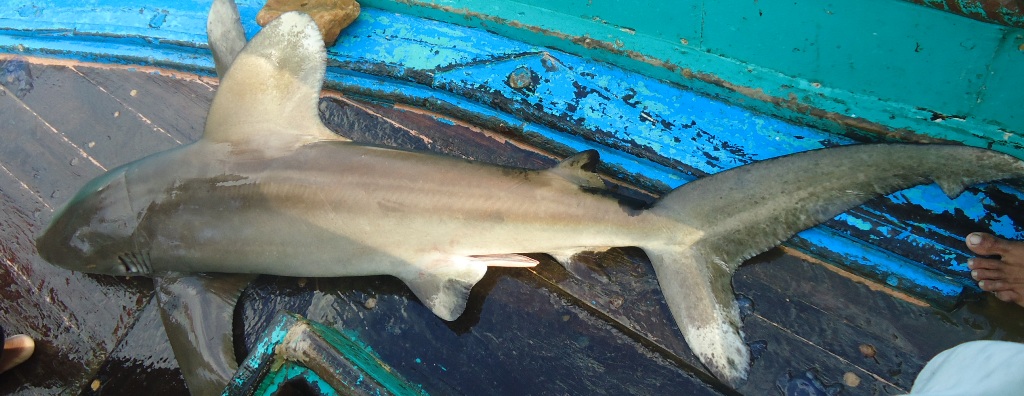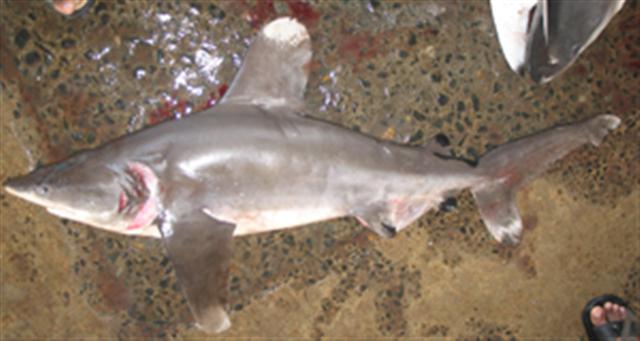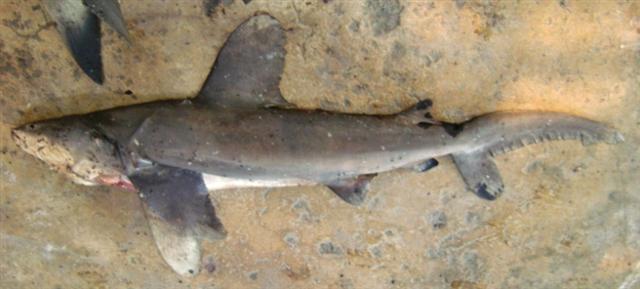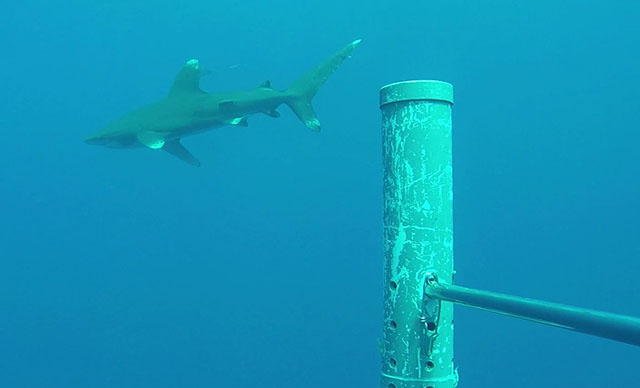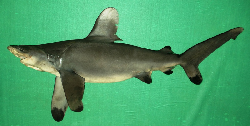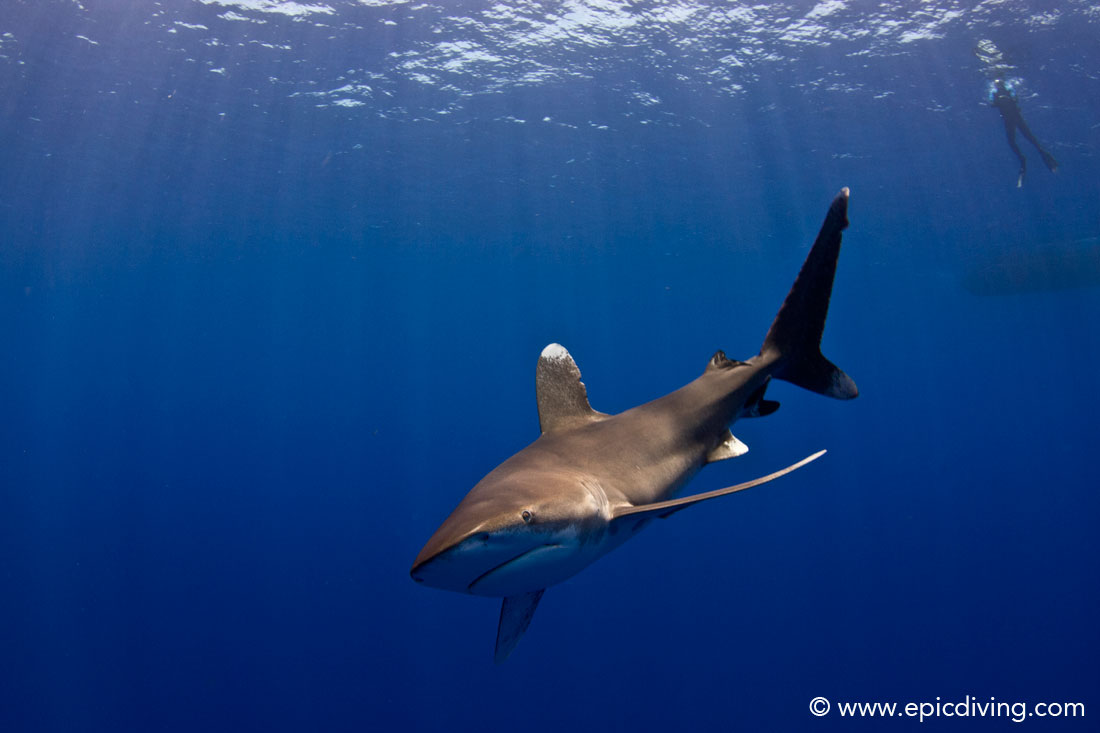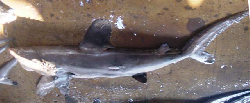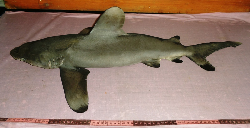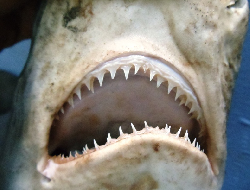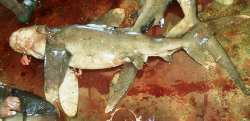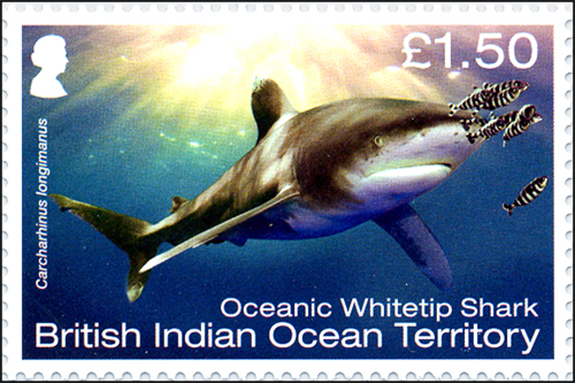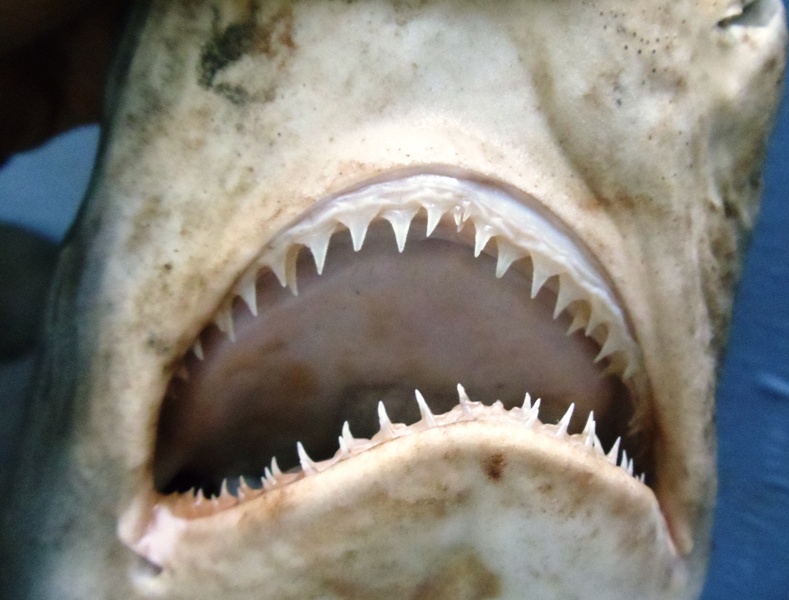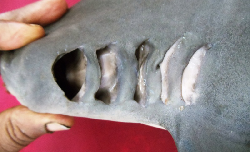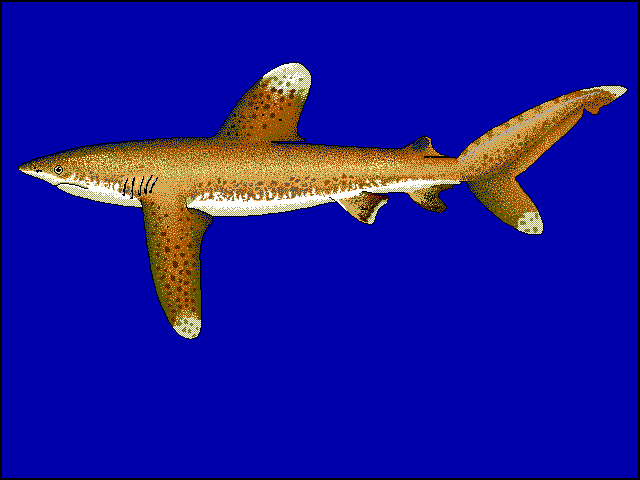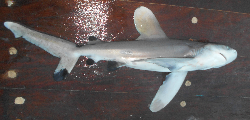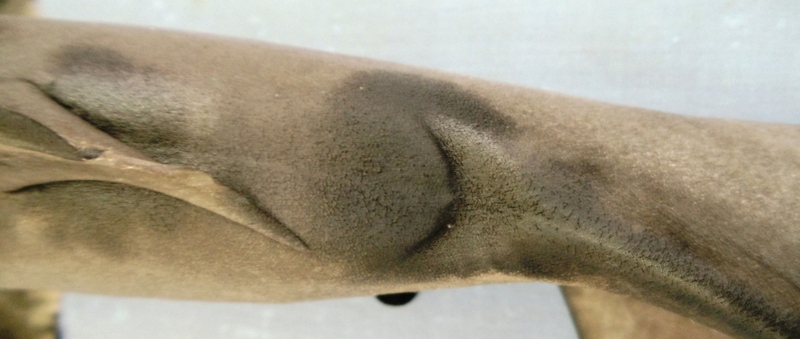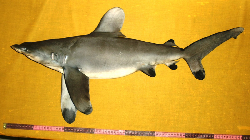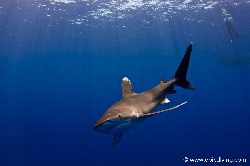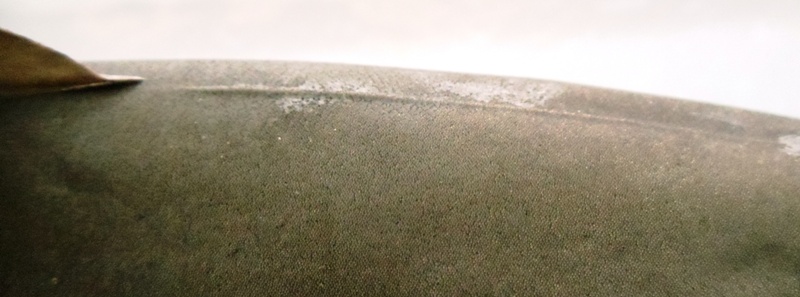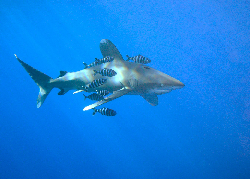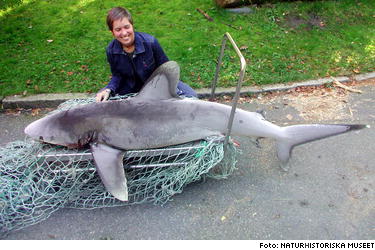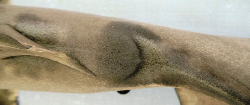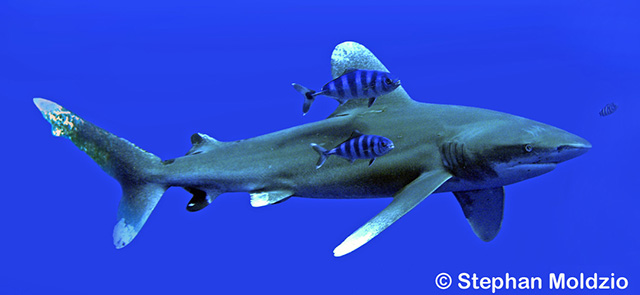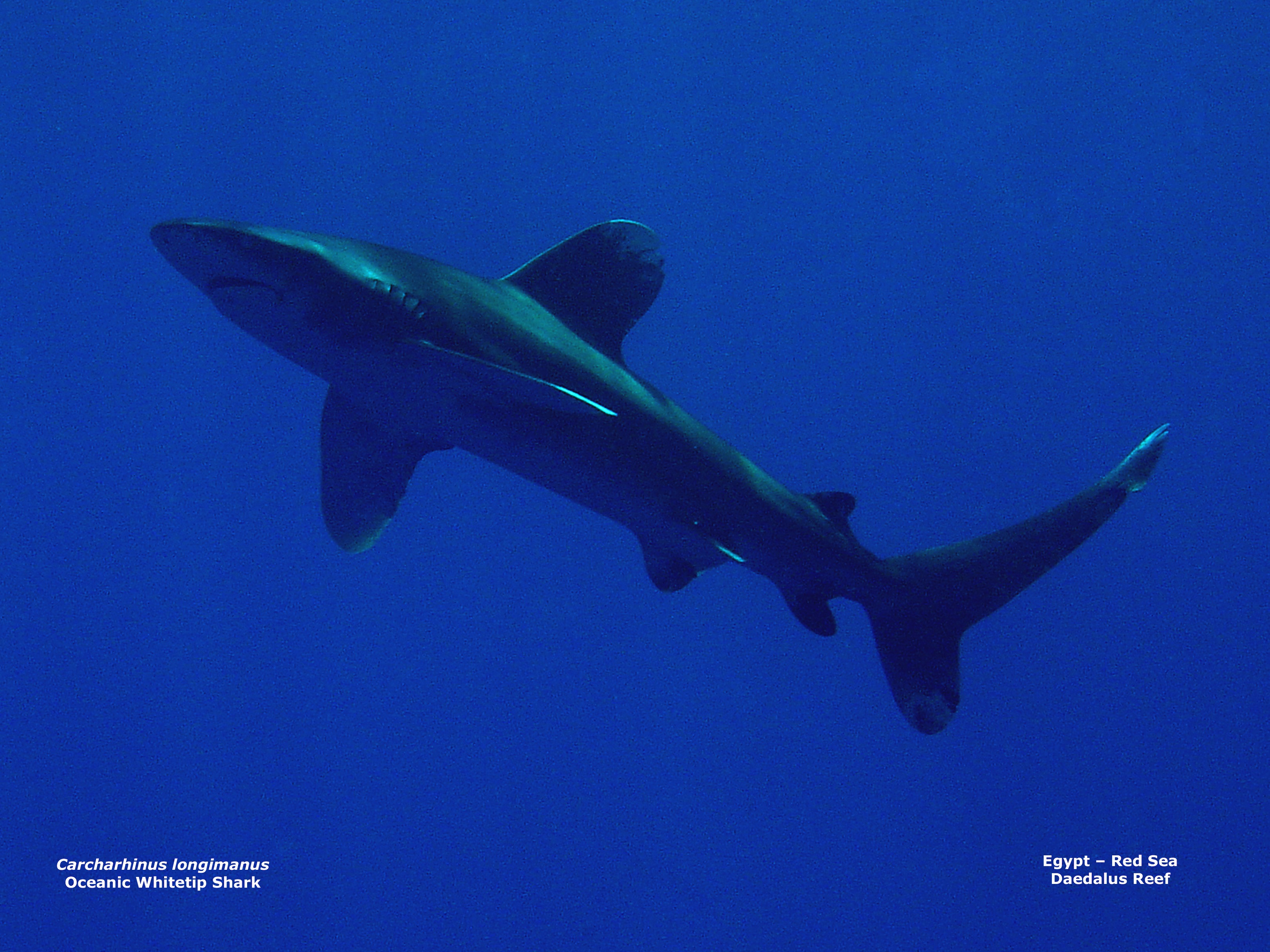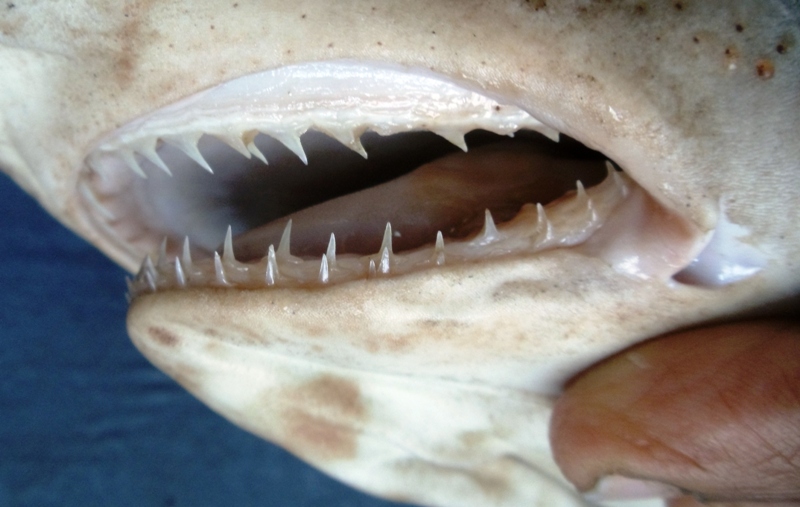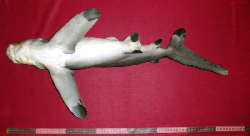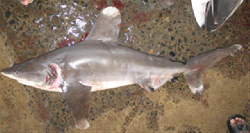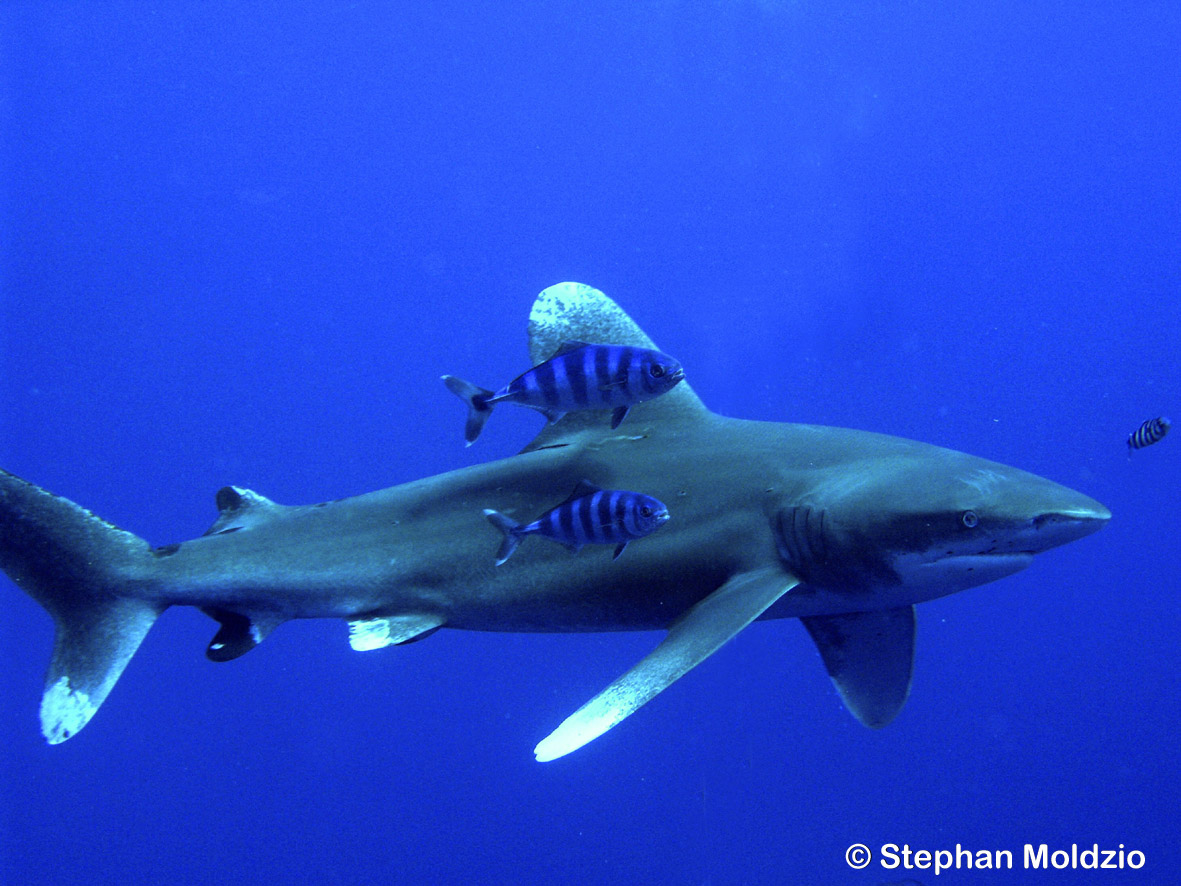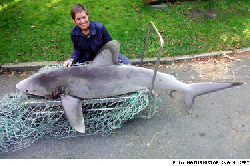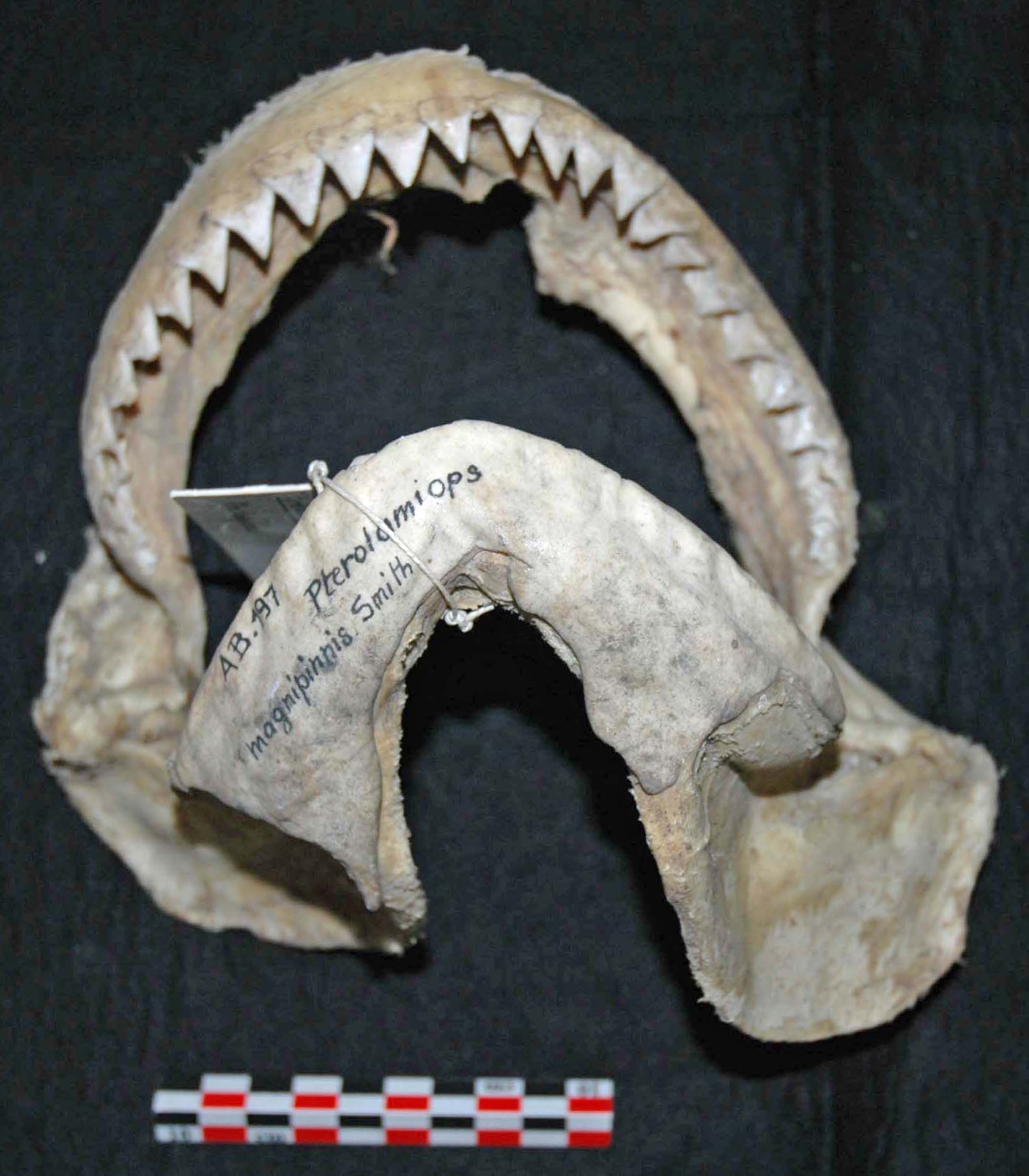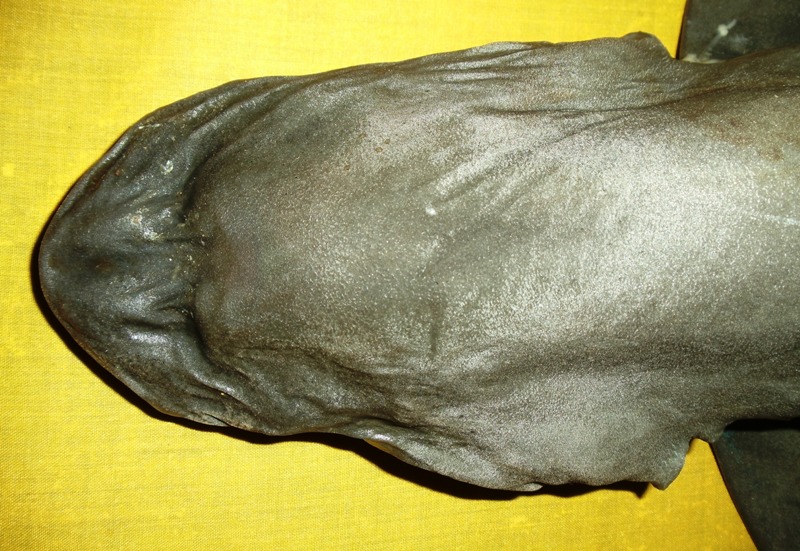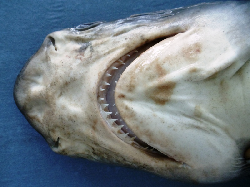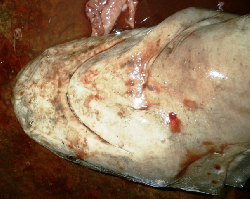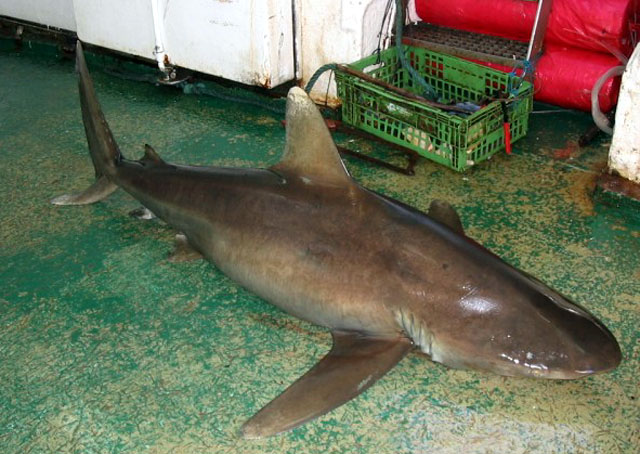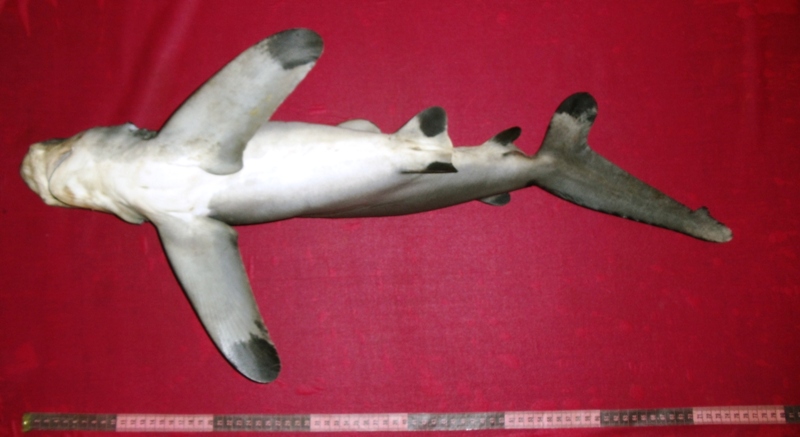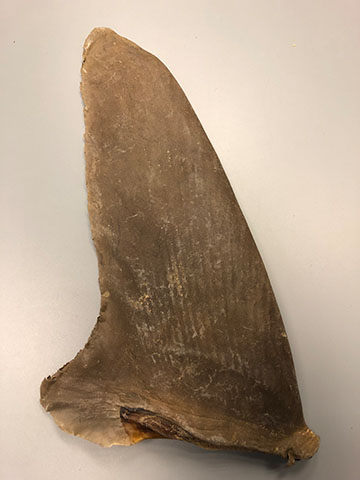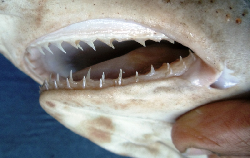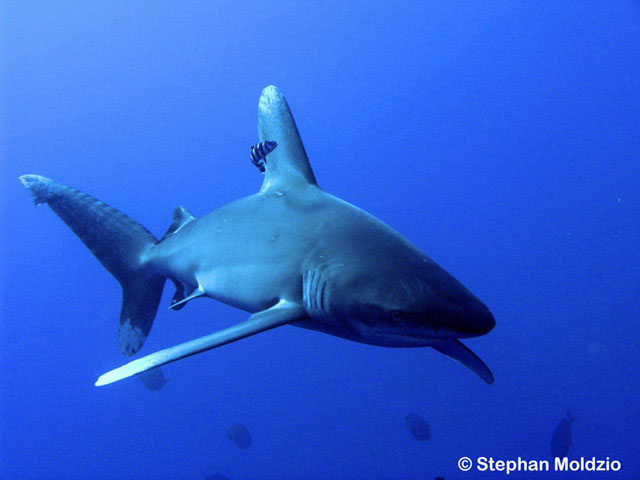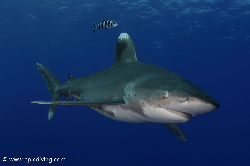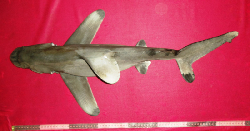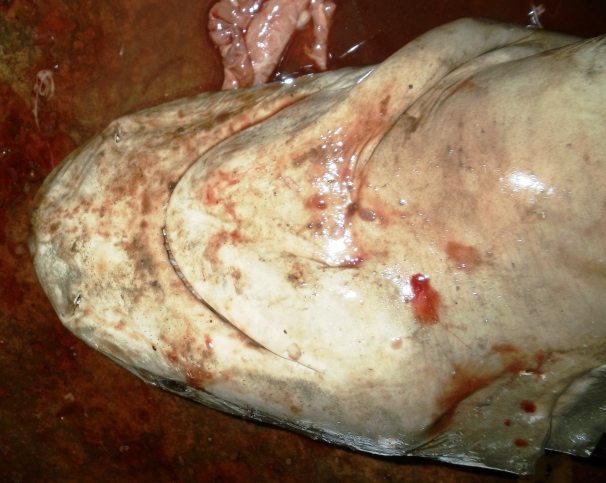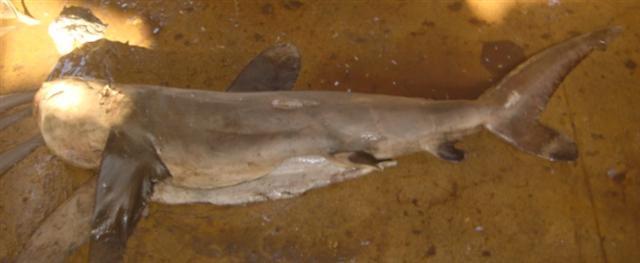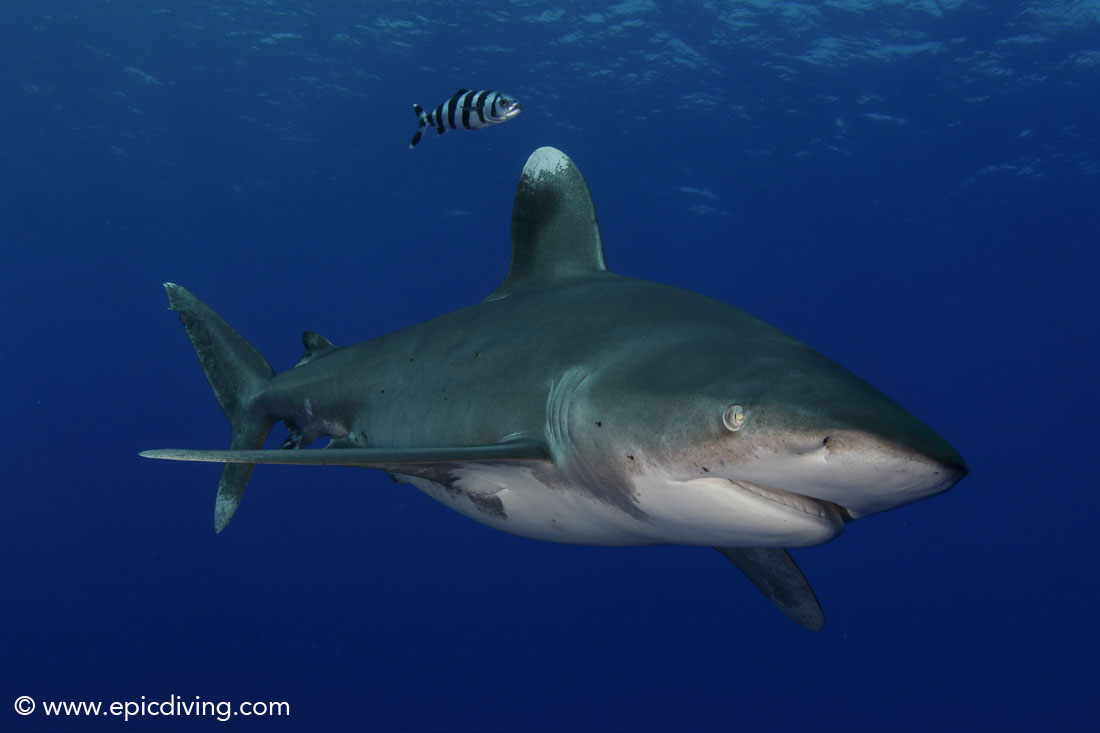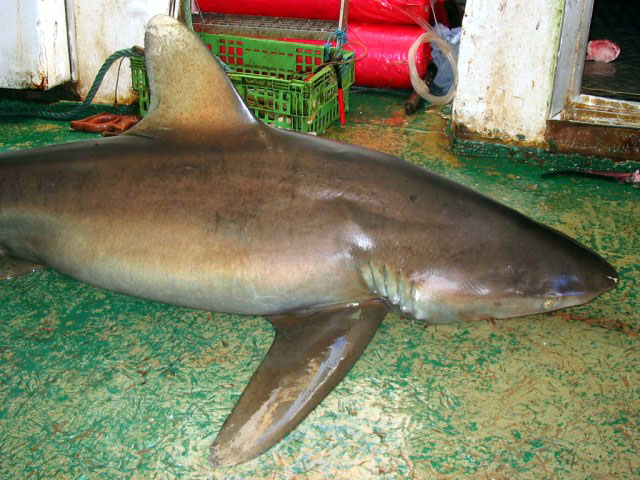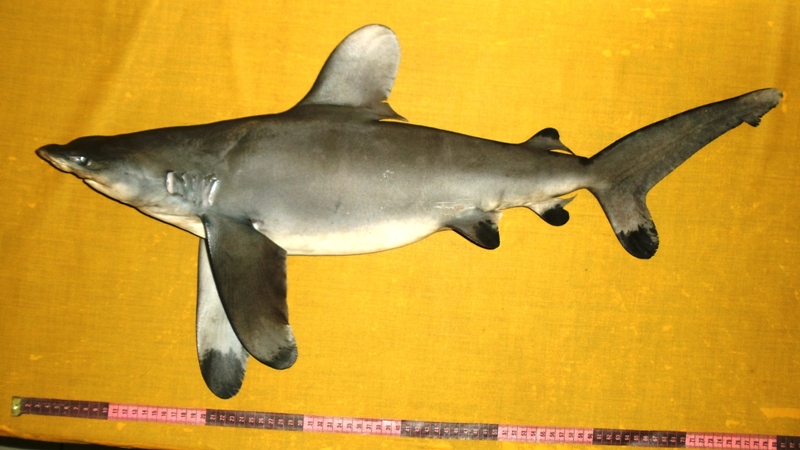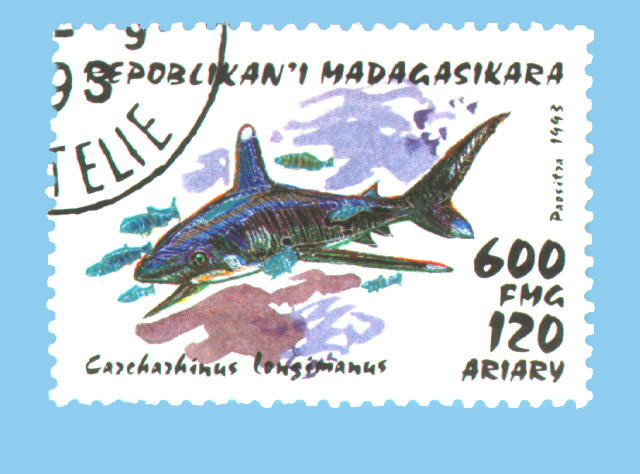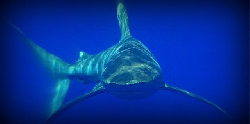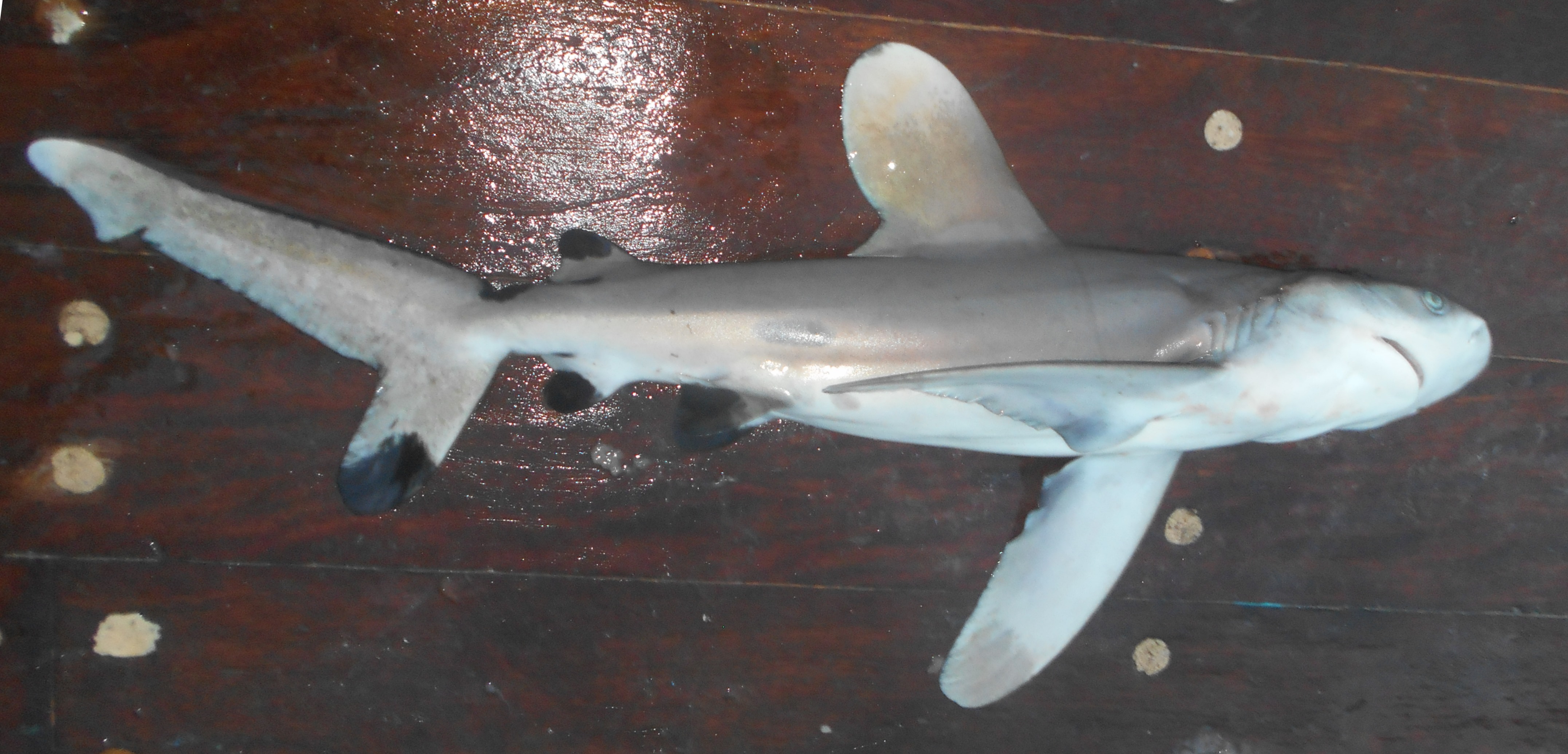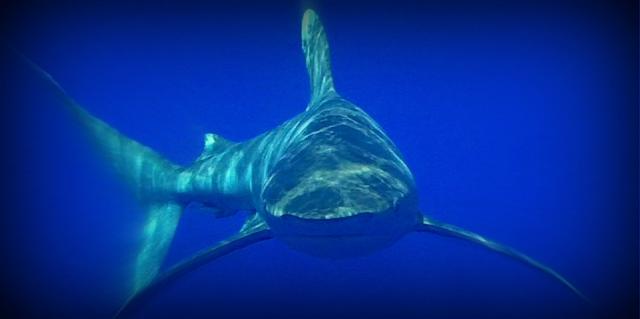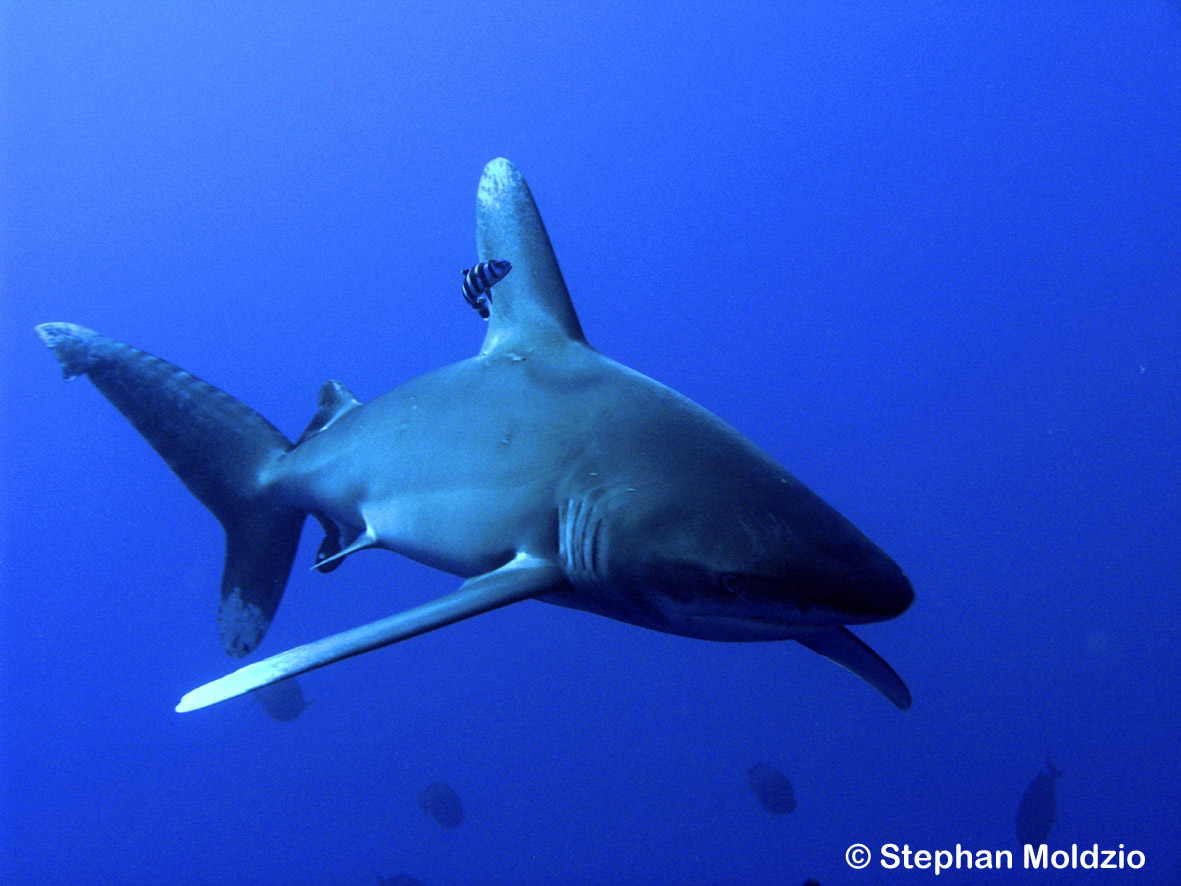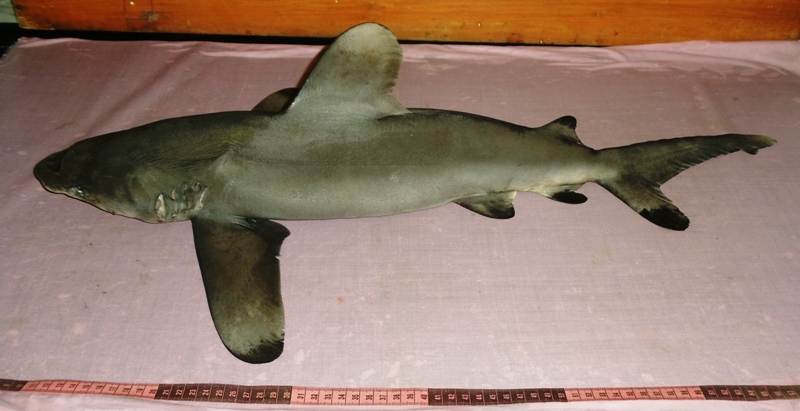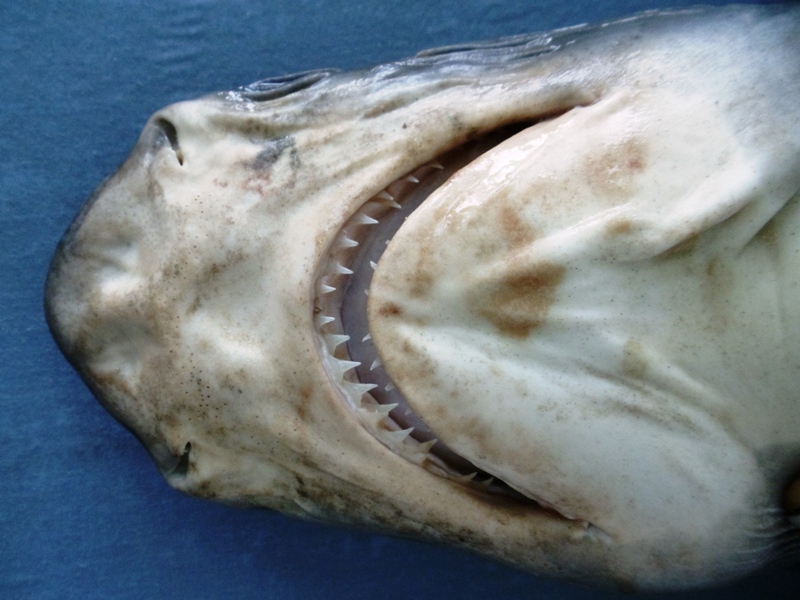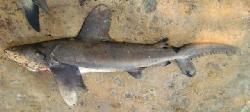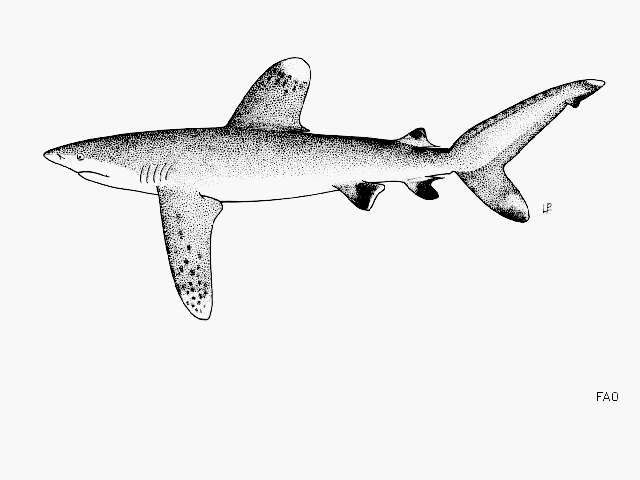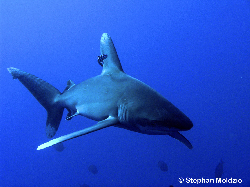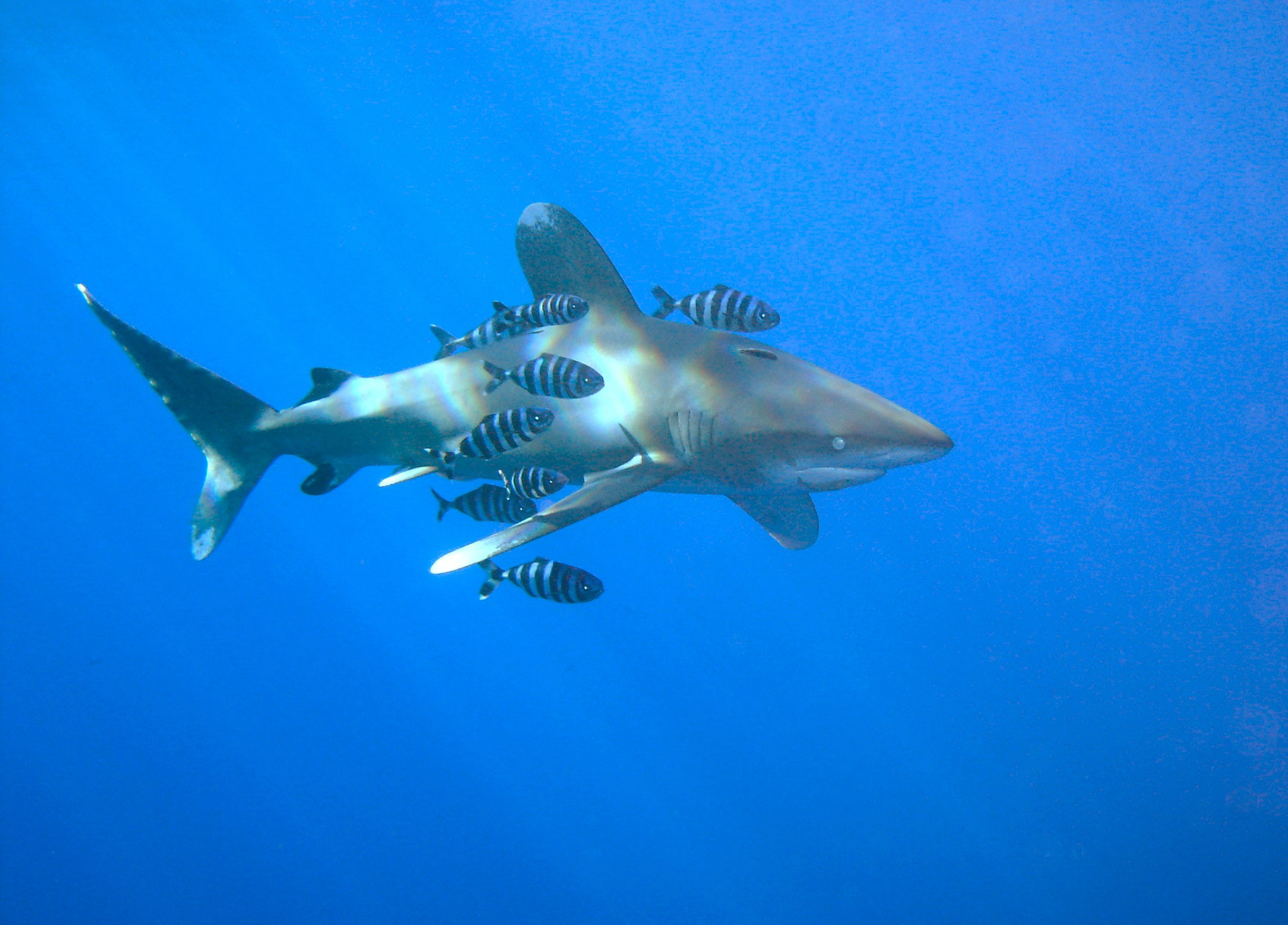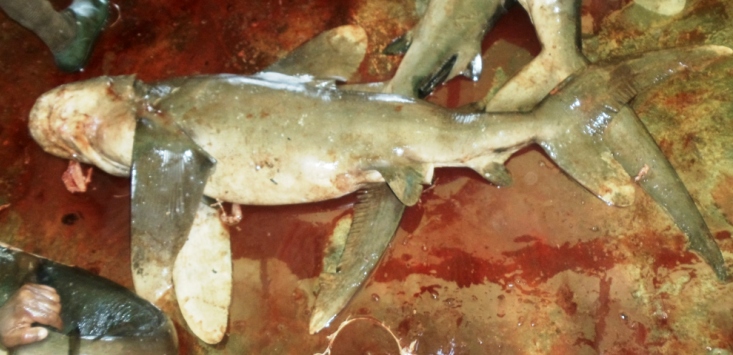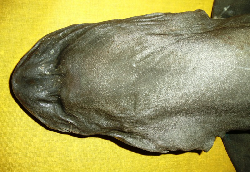Carcharhinus longimanus (Poey, 1861)
Description
Dorsal spines (total): 0; Anal spines: 0. A stocky shark with a huge, rounded 1st dorsal fin, and long, wide-tipped pectoral fins; snout bluntly rounded; upper teeth triangular; interdorsal ridge present (Ref. 5578). Back usually dark grey with a bronze tinge, sometimes brown or bluish; belly whitish, sometimes with a yellow tinge; tips off first dorsal, pectorals, and lower lobe of caudal often white or with white spots (sometimes absent); ventral surface of pelvic fins, apices of anal and second dorsal, and ventral lobe of caudal often with black spots; black or dusky saddle-marks in front of second dorsal, upper margin of caudal and between dorsal fins (especially in young) (Ref. 9997).
Common Names
No common names available.
Taxonomic Hierarchy
Kingdom: Animalia
Phylum: Chordata
Class: Elasmobranchii
Order: Carcharhiniformes
Family: Carcharhinidae
Genus: Carcharhinus
Species: Carcharhinus longimanus (Poey, 1861)
Climate Zone
Location
Biology
An oceanic deep-water species which sometimes comes close to shore (Ref. 244). Found surface to depths of at least 150 m (Ref. 26938). Epipelagic usually over water depths of >184 meters (Ref. 58302). Frequently accompanied by Remora, Coryphaena, pilot fishes (Ref. 30573), and tortoises. Feeds oceanic bony fishes, also threadfins, stingrays, sea turtles, sea birds, gastropods, squid, crustaceans, mammalian carrion and garbage (Ref. 5578), including tuna and mahimahi (Ref. 1602, 37816). Viviparous (Ref. 50449). There is pronounced partial segregation by size and sex in some areas. This is an active, almost fearless shark also charged in human attacks (Ref. 244). Probably responsible for many open-ocean attacks after air or sea disasters (Ref. 6871). Utilized fresh, frozen (Ref. 9987), smoked, and dried-salted for human consumption; hides for leather, fins for fin soup, liver oil for vitamins, also processed into fishmeal (Ref. 244). 1 to 15 young, 60 to 65 cm, are born per litter (Ref. 1602).
Habitat
oceanic
